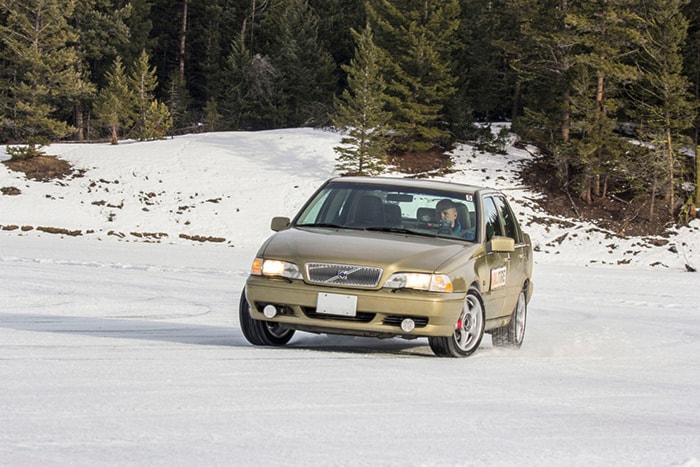Motorists have a few things when considering worn tires.
Vernon-based Kal Tire recently evaluated the performance of various tires at five stages of tread wear — from brand new to zero tread depth.
One of the findings indicates that even a worn premium winter tire can outperform a new three-season tire in certain conditions.
“We’ve been saying for years that three-season tires aren’t as safe during colder months as winter tires, but now we have proof that shows why it’s important to drive the best winter tire that you can,” says Carey Hull, director of retail products.
“With a premium winter tire, you’ve got that much more chance of stopping in time and/or keeping your vehicle on the road, even if your winter tires are half worn, compared to the vehicle beside you in brand new three-seasons.”
In 2015, Kal Tire put new tires to the test to show how different types of new tires perform in every day winter driving conditions. In 2016, the program expanded to test the performance of a premium winter, economy winter, all-weather and three-season (all-season) tire at five levels of tread wear.
“Drivers are always asking when they should replace their tires. We wanted to be able to give them proof about how tire wear impacts performance. Now drivers can see when it’s best to replace their tires, and which types of tires provide safer winter driving through the life of that tire,” said Hull.
“We also thought it was important to test worn tires because most Canadians pull out of the driveway each morning in tires that aren’t brand new.”
Kal Tire’s worn tire testing highlights include:
FINDING 1: A worn five-star premium tire can outperform a new three-season tire in certain conditions.
Ice braking: On an icy road at 30 kilometres per hour, the 75 per cent worn five-star premium winter tire stopped in 29.7 metres; 2.6 metres sooner than the new 3-season, which stopped at 32.3 metres.
Snow cornering: The 75 per cent worn premium winter tire held a corner 4.3 per cent better than the new three-season tire.
FINDING 2: No two winter tires are created equal.
The premium winter tire outperformed the three-star economy winter tire in all tests over all stages of wear. In the ice braking test, the 75 per cent worn premium winter tire stopped in 29.7 metres; the 75 per cent worn economy winter tire stopped in 32.5 metres.
FINDING 3: Braking performance declines between 50 and 75 per cent wear.
Ice braking: When the premium winter tire went from 50 to 75 per cent worn, it took an extra 3.1 metres to brake on ice. The economy winter tire took an extra 4.8 metres.
Snow braking: When the premium tire went from 50 to 75 per cent worn, it took an extra 4.4 metres to brake on snow. The economy winter tire took an extra 4.3 metres to stop.
At various locations across B.C. and without knowing which type of tire or which tread depth level was on the vehicle, an independent professional tire testing team evaluated each tires’ performance in ice and snow cornering, and ice and snow braking.
Scientific data was collected by professional drivers over multiple runs using technology that measured precise driving lines, speed, G-force measurements, GPS information and minute track conditions such as road and wind temperature.
“We’ve taken great care to ensure this is a sophisticated and comprehensive worn tire testing program,” said Hull.
“In addition to testing multiple tread depths in consistent winter conditions, the independent tire testing team provided an incredible calibre of drivers, technology to capture the data, and meticulous attention to variables.”
